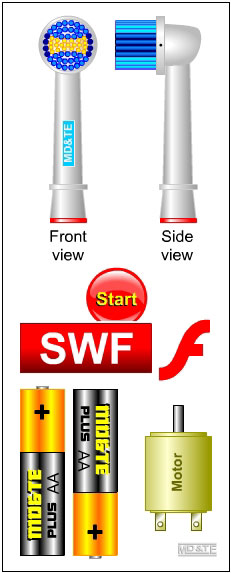Learning ObjectiveTo develop students' problem solving capability by guiding them through a mechanical systems problem. SituationThe diagram opposite illustrates a typical brush head that fits onto an electric toothbrush. This brush head oscillates through an angle of 16 degrees. (Click the start button to view the animation). The toothbrush systemThe known parts of the toothbrush system are:
Problem solving
|
|
||||||||
|
|||||||||
| Click here to view a PDF version of this resource | 
|
 |
|||||||

